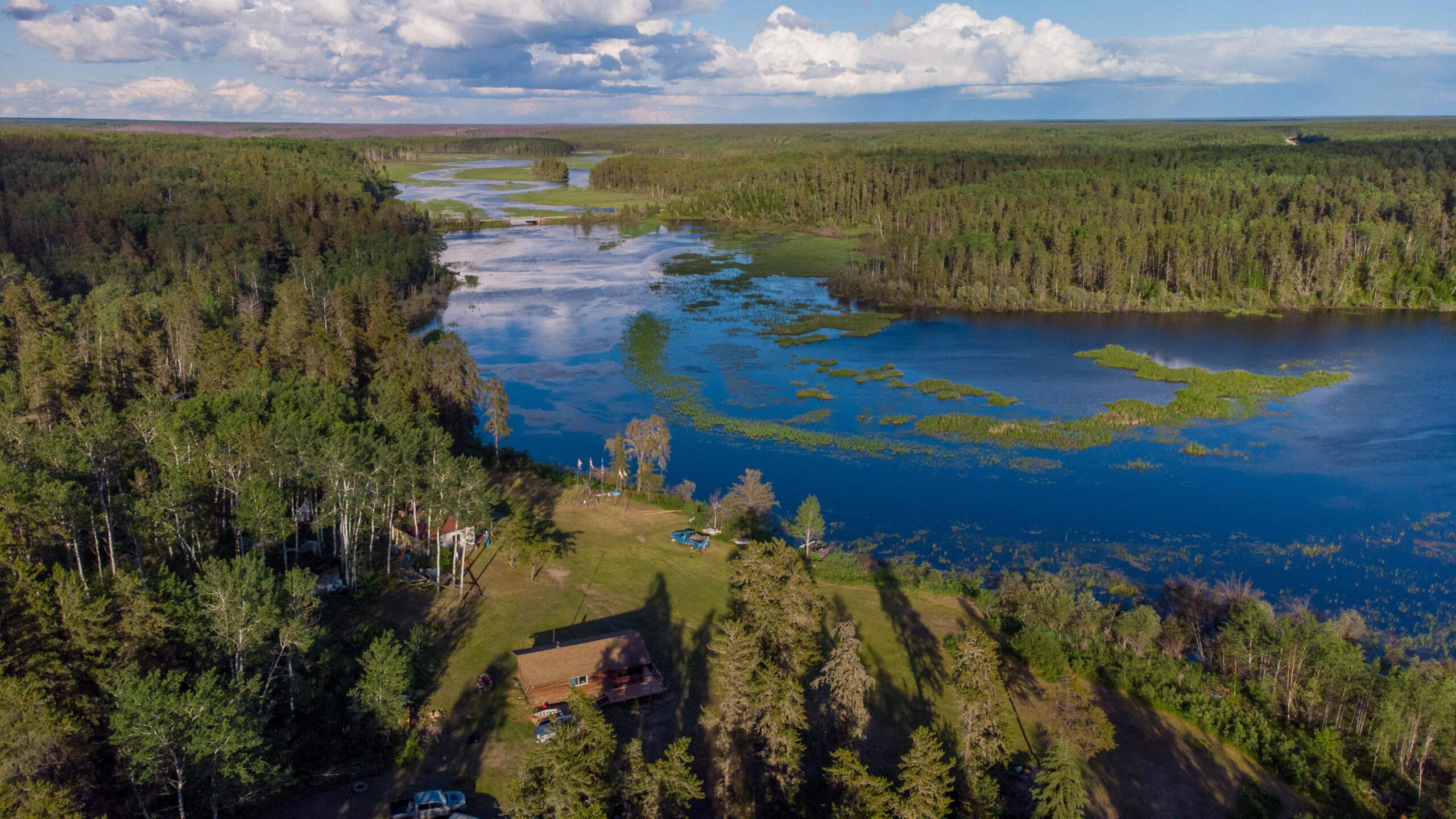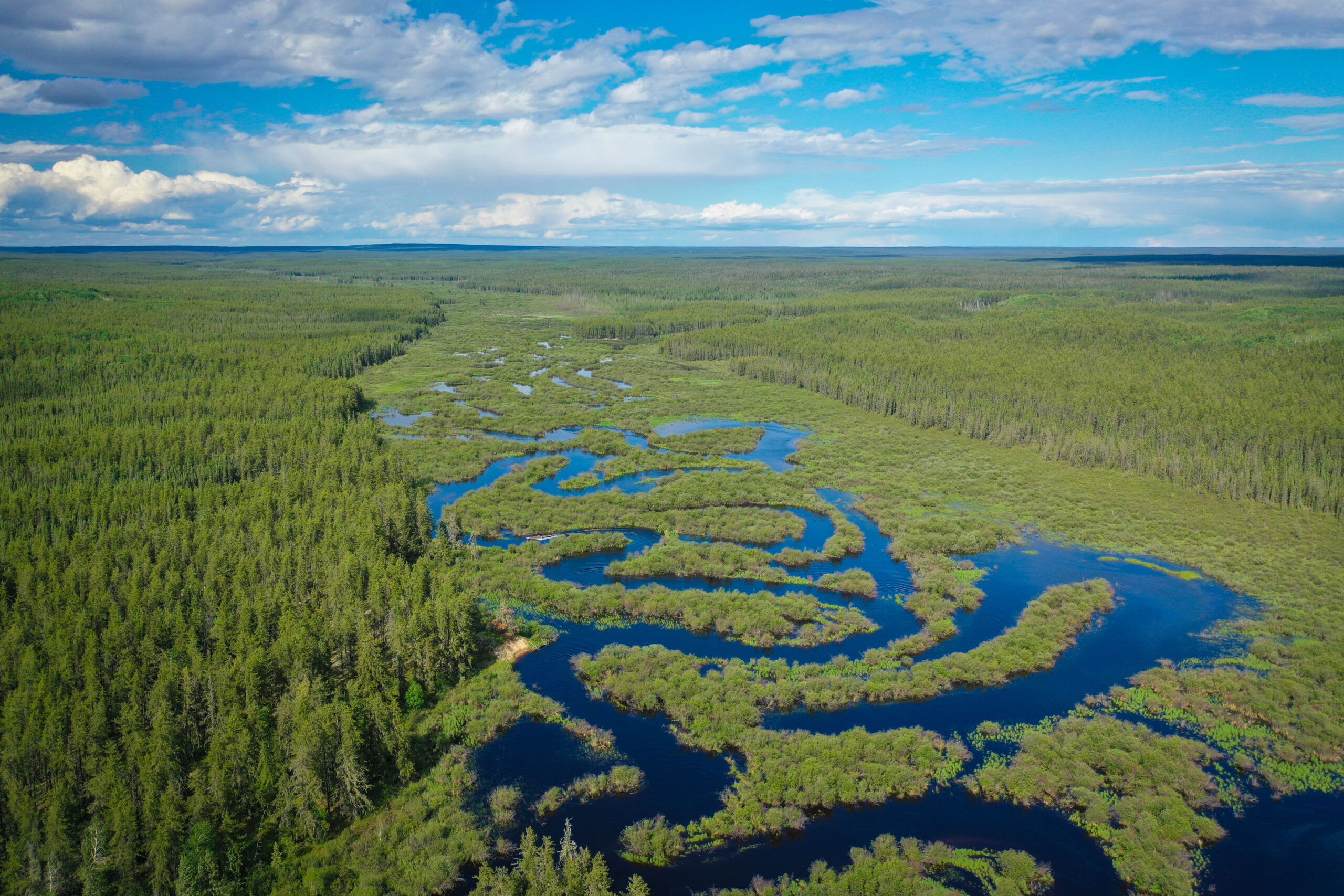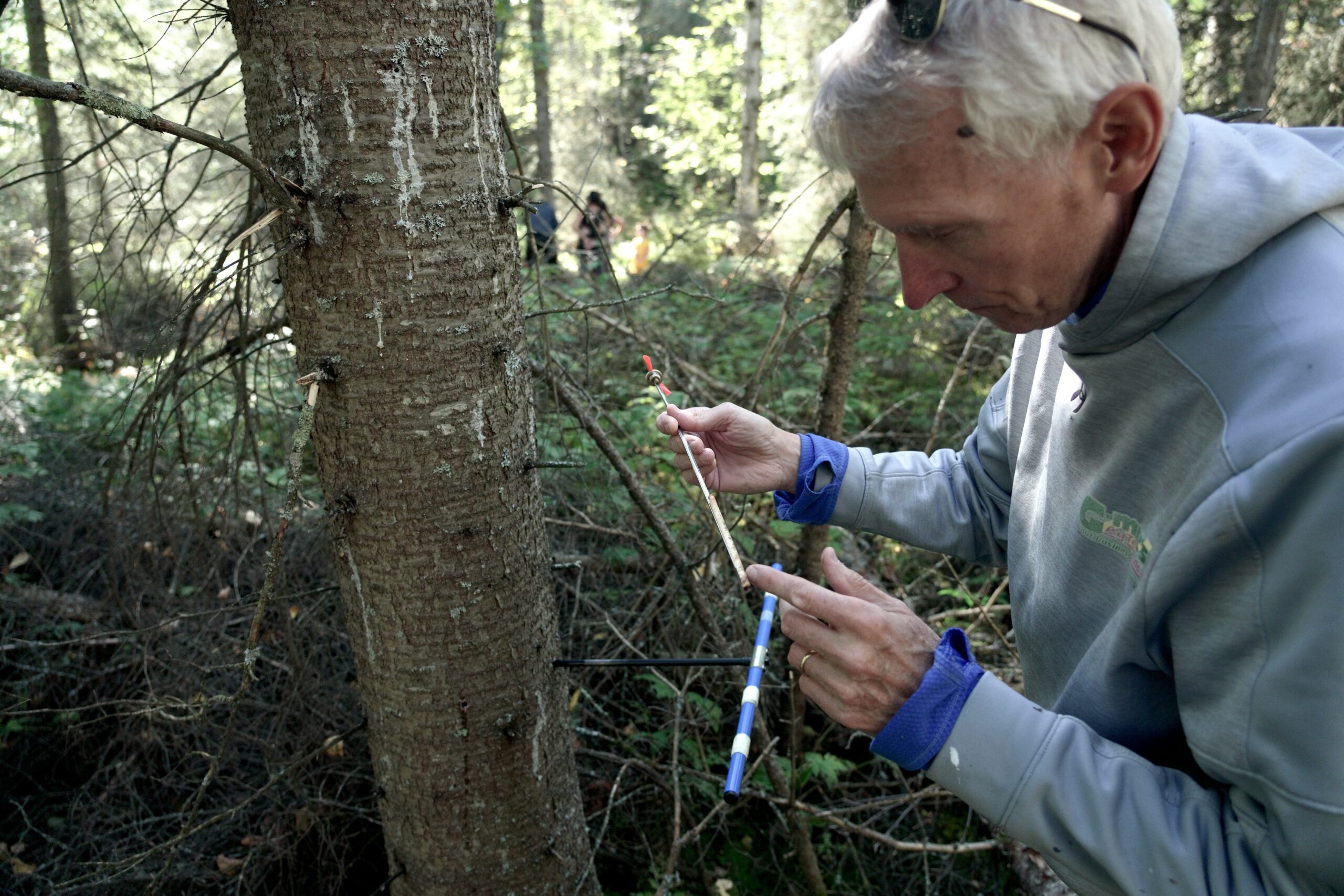
Rocky Mountain coal mine in Alberta takes next step to expansion
In Alberta, a massive open-pit coal mine near Jasper National Park is hoping to expand...
Angus Gardiner doesn’t remember summers being so hot, fires so big, caribou so sparse or walleye so abundant.
Gardiner has lived his whole life in Île-à-la-Crosse, a small Métis settlement with a population of just over 1,000 people in northwest Saskatchewan. The community, known as Sakitawak in Cree, was first established by fur traders in 1776. Today, it’s an area where locals hope increased control of their land will help ease the pressures of a changing climate, industrial activity and what they see as the Saskatchewan government’s outdated approach to forestry and fishing in the region.
Gardiner is a Métis Elder and this place he calls home — where he and his family have trapped, hunted and fished for generations — received three years worth of funding in 2019 from the federal government to explore the idea of establishing an Indigenous Protected and Conserved Area called Sakitawak. The protected area would cover what’s known as the N-14 fur block — a 22,000-square-kilometre area with Lac Île-à-la-Crosse at its centre — and could become the first Indigenous Protected and Conserved Area in Saskatchewan.
The fur block is blanketed by boreal forest and wetlands rich in peat — a key carbon sink — and is home to woodland caribou, moose, bears and more; it’s a breeding ground for great blue heron and osprey; and its waterways are filled with pickerel, jackfish and whitefish.
But it is hemmed in and threatened by logging companies granted 20-year leases without community consultation by the provincial government — and it’s that same government which proponents of the protected area say is unreceptive to their plans and concerns.
Indigenous protected areas first emerged in Canada from a model established in Clayoquot Sound on the West Coast. The concept is predicated on the idea that those who have lived on the land and protected it for generations are best suited to do so into the future. Indigenous-led conservation is also a key part of the federal government’s push to conserve 25 per cent of Canada’s lands and waters by 2025 while working toward protecting 30 per cent by 2030.
Sakitawak’s stated goal, like those of the 52 conservation areas either established or proposed across Canada, is to promote sustainable development while protecting Indigenous ways of life and Traditional Knowledge and while preserving habitats for vulnerable species.
Sakitawak hasn’t been designated as a conserved area just yet. It’s currently considered a preliminary work project, meaning the group behind it — the Sakitawak Conservation Area management team — is establishing a framework that could allow it to become a protected area over the next decade.
The management team is composed of community members including the mayor, Métis representatives, fishers and trappers.
The team behind the Sakitawak project are busy consulting community members and those from surrounding areas, as well as businesses and environmental groups, and establishing a governing framework that involves the community. The team is also actively surveying the natural wealth of the fur block and making the case for why it matters.
“We’re trying to do our best to build that argument through data and science because the [Saskatchewan] government has refused to acknowledge Indigenous Traditional Knowledge,” Kelly Patrick, the director of the Sakitawak project, told The Narwhal
According to their data, the land stores 839 million tonnes of atmospheric carbon — equivalent to the carbon pollution released from driving approximately 180 million cars for a year.

The team has catalogued traditionally used plants including medicines such as muskeg, lichen and rat root, and berries such as strawberries and moose berries. They’ve identified over 100 traplines still in use.
The area is home to white and black spruce and jackpine, some stretching to 200 years old, practically geriatric for the boreal forest. Just over half of the fur block is covered in wetlands thanks to the convergence of the Beaver, Churchill and Île-à-la-Crosse rivers.
Peter Durocher, manager of the Sakitawak project, said it’s critical to protect that habitat and worries industry in the area has already chased away many of the caribou.
“I’ve been a trapper for the last 40 years in Île-à-la-Crosse. I have a trap line that’s about 130 kilometres long,” he said. “And I haven’t seen no caribou tracks on that trap line for eight years now.”
By late January, he said, cameras in the woods to the east of the community still hadn’t captured a caribou for at least seven months.
Durocher worries about logging old-growth trees and about wildfire burning out of control in the area, thanks in part to a government policy not to fight fires more than 20 kilometres from a community and to warmer, drier summers.
But Patrick said establishing the area is not only about keeping the forest intact. It’s also about allowing more control over resources like the fishery and ensuring “generational sustainability” for the people who call the area home.
That generational sustainability includes balancing economic opportunities for those in the area with preservation, something the Métis know well. Fishing is a big part of the equation.
Durocher said forests need to be protected, not just for those increasingly elusive caribou who thrive on the lichen hanging from the oldest trees, but also for the water and the fish that call it home. He points to flash flooding and mudslides on treeless slopes in B.C. during torrential rains last summer and worries about what that would do to their lake.
Durocher and Patrick said they’ve been trying to make a case with the provincial government that its quotas on the commercial fishery in Île-à-la-Crosse, first established in 1997, are woefully outdated and doing harm both to the ecological balance of the lake, but also the potential livelihoods of people in the region.
“Because they won’t allow the locals to fish more walleye, the walleye are now eating up the whitefish and all the other fish,” Patrick told The Narwhal.
The fishery, which supports a fish plant in the village, operates during the cold winter months, with jiggers under the ice catching up to 20 or 30 tubs of fish per day, according to Gardiner. Each tub, he said, holds about 68 kilograms of fish. The fish are left alone in the summer months following spawning in the spring.

He doesn’t understand why the government has maintained its current rules, which restricts the plant’s operations to 230,000 kilograms.
“They just keep it there for the past 30 years, same quota,” Gardiner said.
“There’s so much walleye now, for the last few years, thousands of them, which is a money fish.”
The Saskatchewan Ministry of Environment said it is considering what, if any, changes to make to the quota in the future.
“In January, the ministry worked directly with the fishers and the local processing plant to collect data on the commercial catch, prior to processing, in order to assess the current status of the walleye population,” Chris Hodges, a spokesperson for the Ministry of Environment, wrote in an email.
“This collaborative effort between the ministry, the plant and the local fishers provides valuable data that the ministry will use to make an informed decision on walleye allocations for the coming seasons.”
The fishery is seen as more sustainable than allowing logging on the land, even if done by an Indigenous company like Mistik Management Ltd. — one of the forestry companies granted a lease on the fur block, which has engaged the community about its plans and increased its investments for the community.
“We said ‘well, you know, it’s great that you’re trying to give us a little bit more money. But if we allow you into the south end of the N-14 we are going against what we believe in, and that is to protect the whole N-14,’ ” Patrick said.
The trees themselves help tell the story of the fur blocks and what it might face in the future.
Dave Sauchyn, a professor of geography and environmental studies at the University of Regina and the director of the Prairie Adaptation Research Collaborative, travelled to the area last summer at the request of the project team and took samples from the forest.
“We study climate change, and we say climate change [as in] both in the past and in the future,” he told The Narwhal.
“What they found most interesting was our work on past climate change, because the source of information that we collect is from the forest itself. So there is a record of climate change preserved in the forest in terms of tree rings.”
Sauchyn and his team extract a long section of the tree and take it back to the lab where they sand it, polish it and then scan it into a computer that can measure tree growth to one-thousandth of a millimetre.
He found trees over 200 years old and was able to trace dry years and wet ones, and note their frequency, painting a picture of climatic changes and how they might be exacerbated by a warmer world.
“What’s really cool about this type of project is, of course, there are people who have been living there for thousands of years and passing down their observations,” Sauchyn said.

“We’re just inferring one particular parameter, which is water levels, whereas they know everything to be known about those forests and so we’re able to blend, or compare, the observations of the hunters and trappers and fishermen and Elders with what the scientific evidence suggests about the variability of their climate.”
Armed with what they know, Sauchyn and his team provide not only a glimpse into the past, but projections and climate models showing how it might look in the future — less ice and snow in the winter, more fire and a greater range of extremes.
“There’s a huge area of research on natural infrastructure. Some of our best defence against a changing climate is to use nature to buffer the impacts,” he said.
“It’s very easy to argue that by establishing an [Indigenous Protected and Conserved Area] this community will be less vulnerable to a changing climate than it would be otherwise.”
To achieve that goal, the project will need the support of the provincial government, but that’s far from a given.
The Saskatchewan government must approve the plan for the protected area because the federal government turned over control for almost all Crown land to the province in 1930 through the Natural Resources Transfer Act, according to a legal analysis of the proposal by the Métis Legal Research and Education Foundation.
The community says it has not been consulted about the logging leases in the area and hasn’t been heard when it comes to their concerns about quotas for the commercial fishery.
“We’ve had discussions with the government of Saskatchewan, but it’s just like talking to a wall because we get no dialogue from them at all,” Durocher said.
The province sent a written statement to The Narwhal when asked about allegations there has been a lack of consultation and asking about its position on the creation of an Indigenous Protected and Conserved Area.
“While the Ministry of Environment has had several discussions with representatives of Sakitawak, no formal proposal has yet been received,” Hodges wrote in an email.
As those discussions continue, Patrick said the community feels abandoned to fight all of the outside interests coming to bear on the area, but does not have the time or the money to fight legal battles.
“So you have a poor community, in revenues, let’s just say, and financial opportunity for youth who still live off the land,” Patrick said.
“They are fishing in the wintertime, they have a $4-million fish plant, they have berry picking, they do all those traditional things, and that’s what’s protected that area to date. But all these encroaching interests are happening very fast.”
Updated Feb. 25, 2022, at 2:10 p.m. MST: This story was updated to include a statement from the Saskatchewan Ministry of Environment regarding the fishery quota and walleye allocations.
Get the inside scoop on The Narwhal’s environment and climate reporting by signing up for our free newsletter. A $335 million funding commitment to fund...
Continue reading
In Alberta, a massive open-pit coal mine near Jasper National Park is hoping to expand...

A trade war could help remake B.C.’s food system, but will family farmers be left...

First Nations are leading efforts to make sure lake sturgeon can find a home in...
